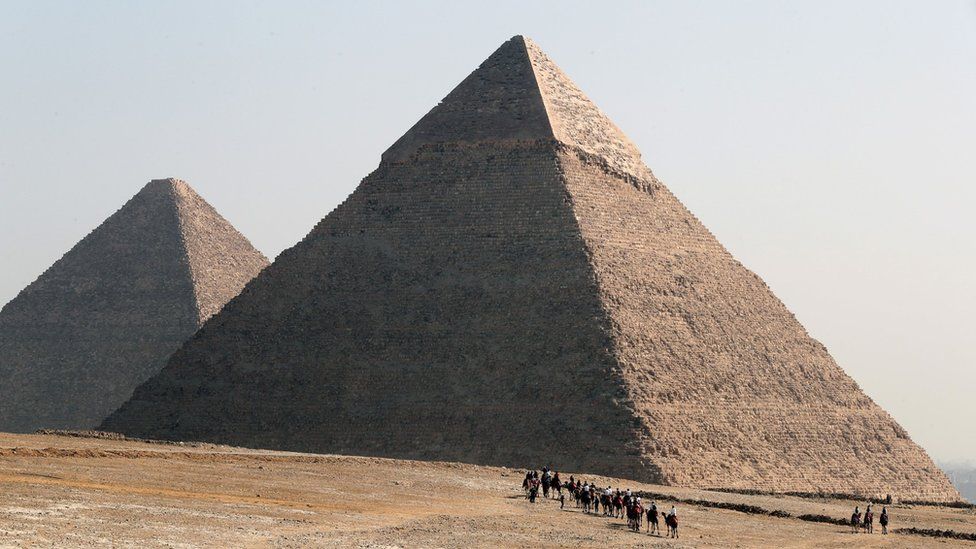Ancient Egypt: Scientists believe they know how pyramids were built
- Published
- comments

The Great Pyramid, seen in the background, is the largest of the three pyramids located at Giza
For thousands of years the mystery of how the pyramids were built has left scientists scratching their heads, but now they think they've cracked it.
There are more than 100 surviving pyramids in Egypt but the most famous is the Great Pyramid of Giza which stands at over 450 feet tall (about half the height of the Shard skyscraper in London).
A team from the University of North Carolina believe that 31 of the structures, including Giza, were likely to have been built along a long-lost part of the River Nile.
For years, archaeologists have thought that ancient Egyptians had used a waterway nearby, but Prof Eman Ghoneim who led the team, says until now "nobody was certain of its location".
The pyramids were built more than 4,000 years ago
Ancient Egypt: How were the pyramids built?
The team used a combination of special technology, historical maps, geographical surveys and examined samples from the area near the pyramids to map the hidden part of the Nile.
They believe this was used to transport stone blocks to build the structures, but was then buried by sandstorms and drought thousands of years ago.
Prof Ghoneim said the technology allowed them to produce images of hidden features under the sand.
This revealed "buried rivers and ancient structures" at foothills near to the "vast majority of the Ancient Egyptian pyramids".
The team believe a hidden part of the Nile was used to transport the blocks used in the pyramids
Hidden part of the the river Nile
The hidden part of the Nile has been called the Ahramat branch - "ahramat" means pyramids in Arabic.
It's thought it was roughly 39 miles (64km) long and between 200-700m wide.
Before it became covered in sand, it is believed to have bordered 31 pyramids, which were built between 4,700 and 3,700 years ago.
The team say discovering this now extinct section of the river helps to explain how there are so many pyramids between Giza and Lisht, which is an area of the Saharan desert with very difficult conditions.
- Published24 March 2023
- Published7 November 2018
- Published11 June 2013
